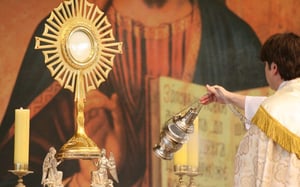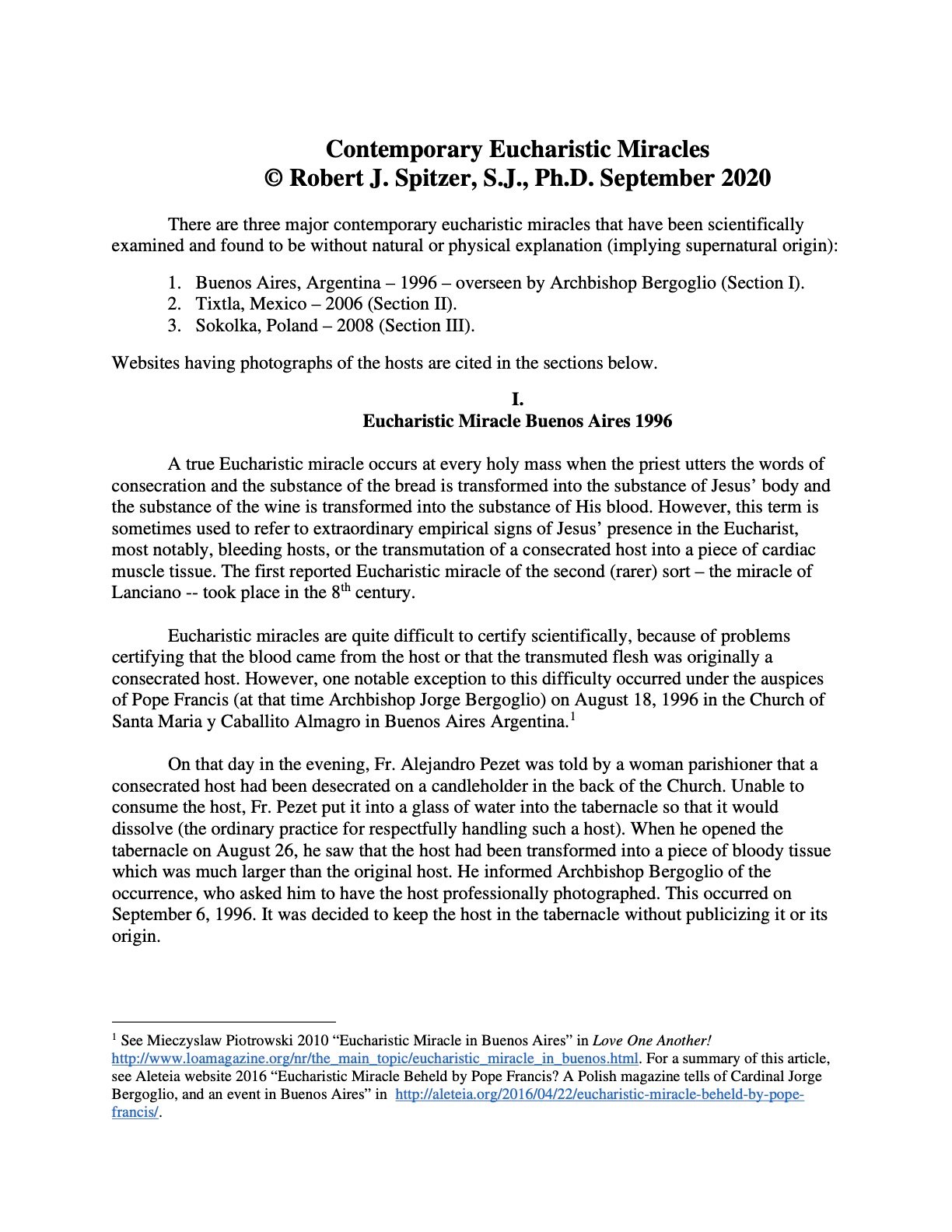A true Eucharistic miracle occurs at every holy mass when the priest utters the words of consecration and the substance of the bread is transformed into the substance of Jesus’ body and the substance of the wine is transformed into the substance of His blood. However, this term is sometimes used to refer to extraordinary empirical signs of Jesus’ presence in the Eucharist, most notably, bleeding hosts, or the transmutation of a consecrated host into a piece of cardiac muscle tissue.
Eucharistic miracles are quite difficult to certify scientifically, because of problems certifying that the blood came from the host or that the transmuted flesh was originally a consecrated host. Yet, there are three major contemporary eucharistic miracles that have been scientifically examined and found to be without natural or physical explanation (implying supernatural origin):
1. Buenos Aires, Argentina – 1996 – overseen by Archbishop Bergoglio (Section I).
2. Tixtla, Mexico – 2006 (Section II).
3. Sokolka, Poland – 2008 (Section III).
The article below describes each of these Eucharistic miracles in detail. Click on the page below to view the full document.
Read Also:
4 Approved Eucharistic Miracles from the 21st Century
The Eucharistic Miracle Overseen by Archbishop Bergoglio (Now Pope Francis)


